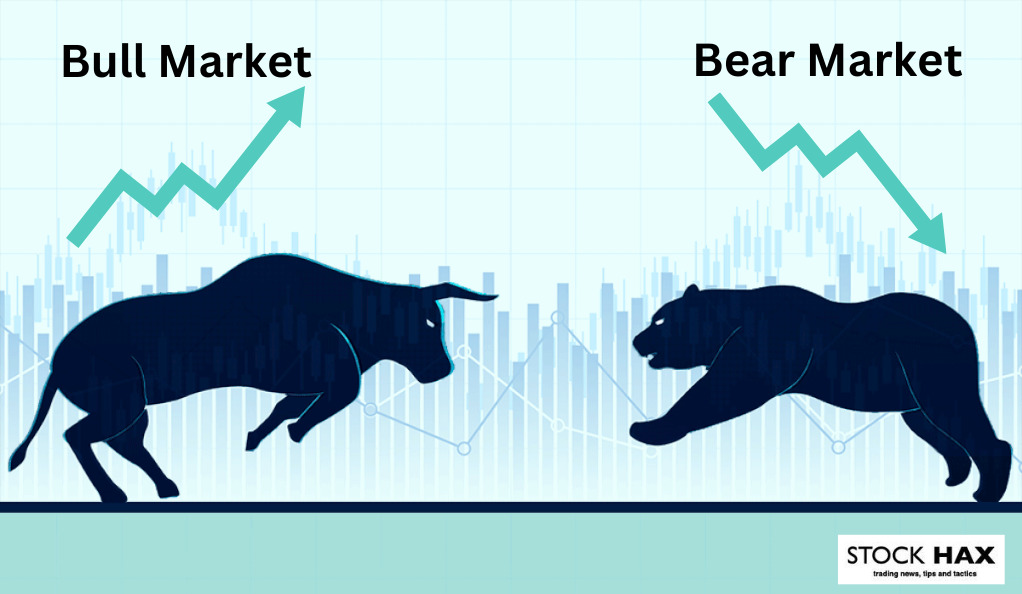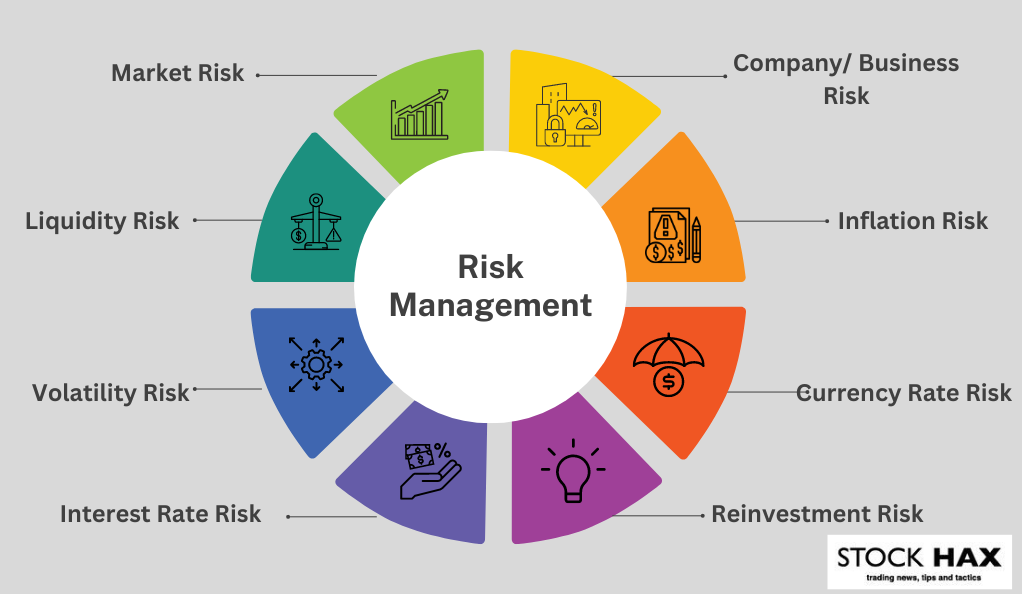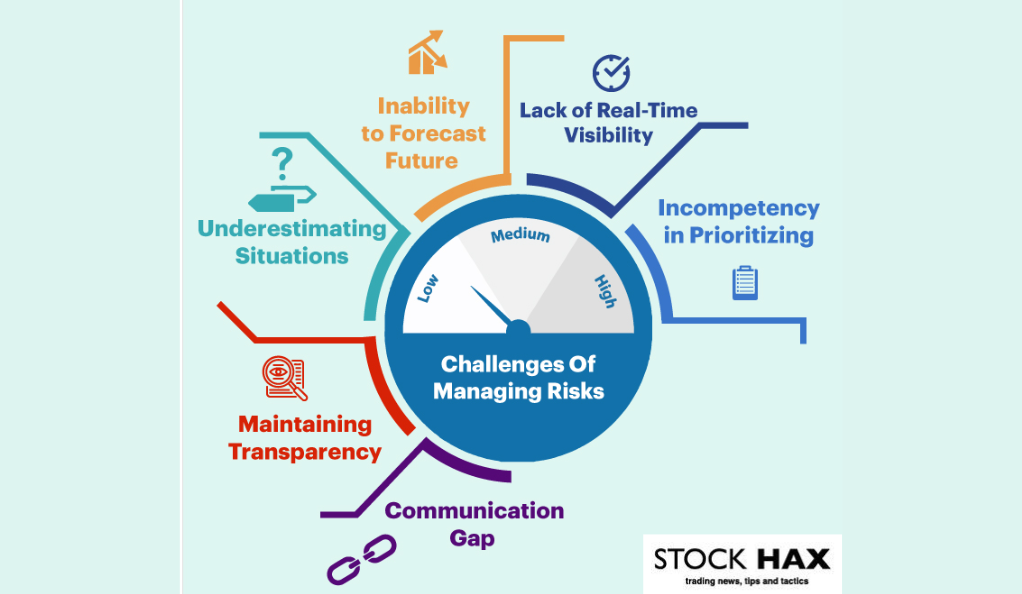This website and its content are not intended to provide professional or financial advice. The views expressed here are based solely on the writer’s opinion, research, and personal experience, and should not be taken as factual information. The author is not a financial advisor and lacks relevant certifications in that regard. We highly recommend consulting a qualified financial advisor before making any investment decisions, as the information presented on this site is general in nature and may not be tailored to individual needs or circumstances.

In the thrilling world of stock trading, fortunes can be made or lost within moments. While the allure of potential profits attracts many, it’s crucial to navigate the treacherous waters of the stock market with caution. This is where risk management steps in, providing a compass to guide traders through that tumultuous journey.
Key Factors
- Stock trading involves the buying and selling of shares of publicly traded companies on the stock market.
- While the potential for substantial gains exists, trading stocks also carry multiple inherent risks.
- Market volatility, unexpected events, and human emotions can lead to significant losses if not handled prudently.
- Therefore, it becomes imperative for traders, especially beginners, to understand and implement effective risk management strategies.
- Effective risk management is essential for protecting invested capital and improving the chances of success in stock trading.
The aim of this article is to serve as a beginner’s guide to risk management in stock trading, equipping novice traders with essential pieces of knowledge and practical techniques to identify, assess, and mitigate risks.
By emphasizing the importance of risk management, this guide will empower beginners to make informed decisions, preserve their trading capital, and lay the foundation for long-term profitability in the highly dynamic environment of stock trading.
Understanding The Risks of Stock Trading
Before delving into risk management strategies, it is essential to comprehend the concept of risk itself. In stock trading, risk refers to the potential for financial loss or adverse outcomes resulting from the volatility and unpredictability of the markets.

Understanding the major types of risks involved is crucial for effective risk management.
- Market Risk: Market risk, also known as systematic risk, is the risk associated with overall market movements. Factors such as economic conditions, political events, and global trends can influence stock prices. When the market is volatile, stock prices can fluctuate significantly, leading to potential losses for traders. Diversification, a risk management technique, can help mitigate market risk by spreading investments across different asset classes and sectors.
- Company-Specific Risk: Company-specific risk, also known as unsystematic risk, refers to the risks associated with individual companies. Factors such as management changes, product failures, or legal issues can affect a specific company’s stock price. Thorough research and analysis of a company’s fundamentals, such as financial health, competitive positioning, and industry trends, can help traders identify and manage company-specific risks.
| Example | Description |
| Economic Recession Risk Example | – During an economic recession, the overall market may experience a downturn, causing stock prices to decline across various sectors. – If a trader has heavily invested in a single sector, such as technology, they may face substantial losses due to the sector-wide decline. |
| Company-Specific Risk Example | – Trader invests a significant portion of their capital in a single company without conducting thorough research. – If the company faces a product recall or a high-profile lawsuit, its stock price may plummet, resulting in substantial losses for the trader. |
Understanding the different types of risks in stock trading is fundamental to implementing effective risk management strategies. By recognizing market risk and company-specific risk, traders can take proactive measures to protect their investments.
In the next subtopic, we will explore specific risk management techniques that beginners can employ to minimize potential losses and maximize their chances of success in stock trading.
Risk Management Methods
Now that we understand the main risks, it is crucial to explore practical risk management techniques that can help in mitigating those. Implementing the below techniques may enhance the overall trading experience and increase the likelihood of achieving favorable outcomes.
- Setting Risk Tolerance: Determining your risk tolerance is a critical step in risk management. It involves assessing your financial situation, investment goals, and personal comfort level with risk. Based on your risk tolerance, you can establish appropriate risk limits for individual trades or your overall portfolio.
- Position Sizing: Position sizing refers to determining the appropriate amount of capital to allocate to each trade. By employing position sizing techniques such as the fixed-percentage method or the risk-based method, traders can limit their exposure to any single trade.
- Stop Loss Orders: A stop loss order is a risk management tool that automatically triggers the sale of a stock if it reaches a predetermined price level. It acts as a safety net, allowing traders to exit a position if the market moves against their expectations, thereby preventing further losses. Vice versa works with Profit Targets, which help traders lock in profits and avoid getting carried away by short-term market fluctuations.
For instance, if an individual has a low-risk tolerance and is primarily focused on capital preservation, they may choose to allocate a smaller portion of their portfolio to high-risk stocks or volatile sectors, such as technology or biotech. Conversely, someone with a higher risk tolerance and a longer investment horizon may allocate a larger portion of their portfolio to higher-risk, higher-potential-reward stocks.
Example:
- Suppose a trader decides to allocate a maximum of 5% of their trading capital to any single trade. If their total capital is USD 10,000, they would limit their exposure to USD 500 per trade.
- This ensures that even if the trade goes against them, the potential loss is limited and does not significantly impact their overall portfolio.
- By employing risk management techniques traders can effectively manage the inherent risks in stock trading.
In the next part of this report, we are going to dive deeper into the emotional and psychological factors when investing in stocks.
Emotional Control and Psychological Aspects of Risk Management in Stock Trading
Successful stock trading not only requires knowledge of market dynamics but also the ability to manage one’s emotions effectively. Human emotions may greatly impact any type of decision-making, leading to impulsive actions and potentially undermining the implementation of proper risk management rules.
Emotions can cloud judgment and lead to poor decision-making. Emotions like:
- Fear
- Greed
- Overconfidence
Traders need to be aware of common emotional biases, such as loss aversion (fear of losses more than gains), confirmation bias (seeking information that confirms preexisting beliefs), and herd mentality (following the crowd without independent analysis). Recognizing and managing these biases is crucial for effective risk management.
Stock trading requires discipline and patience to stick to a well-defined trading plan. Traders should:
- Set clear entry and exit criteria based on their risk management strategies.
- Avoid making impulsive decisions driven by short-term market fluctuations.
Maintaining discipline helps traders:
- Stay focused on their long-term goals.
- Prevent emotional reactions to market volatility.
Fear and greed are two powerful emotions that can influence decision-making in stock trading:
| Emotional Bias | Impact on Trading |
| Loss Aversion | Reluctance to sell losing stocks, leading to greater losses. |
| Greed | Holding onto stocks for higher gains, risking potential losses. |
Managing emotional biases is essential for more rational decision-making and adherence to risk management strategies, increasing the chances of long-term success.
In the following subtopics, we will explore helpful technical tools to enhance the trading experience. By incorporating a table and lists, the text becomes more visually appealing and organized.
It provides key points and examples in a concise manner, helping readers grasp the concepts of discipline, emotional biases, and risk management in stock trading.
Risk Management Tools and Software for Stock Trading

In the digital age, technology has revolutionized stock trading, providing traders with a wide range of tools and software to assist in risk management. This subtopic explores various tools and software solutions available that can enhance risk management practices and help traders make more balanced decisions.
- Stock Screeners: Stock screeners allow traders to filter stocks based on specific criteria like market capitalization, sector, and price-earnings ratio. They help identify potential investment opportunities while considering risk factors such as financial health and growth prospects.
- Risk Analysis Tools: Risk analysis tools provide quantitative insights into the risk profile of stocks or portfolios. They calculate risk metrics like volatility, beta, and Value at Risk (VaR), aiding informed decision-making and adjustment of risk management strategies.
- Portfolio Management Software: Portfolio management software helps track and manage investments comprehensively. It offers features like performance tracking, risk assessment, and asset allocation analysis, facilitating effective risk monitoring and diversification.
- Automated Trading Systems: Automated trading systems execute trades based on pre-defined rules and algorithms. They incorporate risk management parameters like stop loss levels and profit targets to manage risk and protect trading capital, reducing emotional biases.
Risk management tools and software empower stock traders to analyze, monitor, and manage risks effectively. Stock screeners, risk analysis tools, portfolio management software, and automated trading systems enhance risk management strategies, improving the chances of success for stock traders.
Learning from Mistakes: Analyzing and Adjusting Risk Management Approaches
In the complex universe of stock trading, mistakes are inevitable. However, let’s consider what separates successful traders from others is their ability to learn from these mistakes and continuously improve their risk management approaches.
- Reflect on Past Trades:
- Analyze past trades to identify where risk management strategies fell short.
- Reflect on missed profit targets, excessive risk exposure, and emotional decision-making.
- Gain valuable insights into areas that require improvement.
- Continuous Learning and Research:
- Strive for ongoing learning and stay updated with market trends and risk management techniques.
- Expand knowledge and skill set to make better decisions and adapt to changing market conditions.
- Adjust Risk Mitigation Approaches:
- Based on analysis of past mistakes and identification of common patterns, make regular adjustments to risk management approaches.
- Set tighter stop loss levels, diversify across asset classes, and incorporate new risk management techniques.
With the knowledge gained from this brief guide, a novice trader may lay a good foundation for her/his risk management practices and embark on a long-haul journey of becoming a more skilled and resilient stock trader.
Conclusion
It is important to state that risk management is one of the cornerstones in stock trading that cannot be overlooked. By understanding the various risk types, implementing adequate risk management techniques, using available tools and software, as well as practicing emotional control, beginners can navigate the volatile stock markets with higher confidence.
It is essential to learn from past mistakes, constantly analyze and adjust risk management approaches, and stay committed to ongoing education and knowledge improvement. By having a solid ground in risk management, traders can better protect their capital, enhance decision-making quality, and hence also increase their chances of long-term success in the dynamic ecosystem of modern-day stock trading.
FAQ
Defining your risk tolerance level, applying position sizing for the stock titles you hold, and placing stop loss and profit target orders are the most important risk management methods in stock trading.
Leverage is a double-edged sword: it may amplify potential gains, whereas it also increases the risk of larger possible losses. Traders must consider the level of leverage they apply carefully, as it can impact their risk exposure significantly, potentially triggering margin calls.
During earnings seasons or major news events, traders can manage their risk by adjusting position sizes, avoiding trading decisions based solely on rumors or speculations, and being prepared for increased market volatility. Additionally, utilizing hedging strategies or placing limit orders may secure additional control over potential risks.
StockHax strives to provide unbiased and reliable information on cryptocurrency, finance, trading, and stocks. However, we cannot provide financial advice and urge users to do their own research and due diligence.
Read More